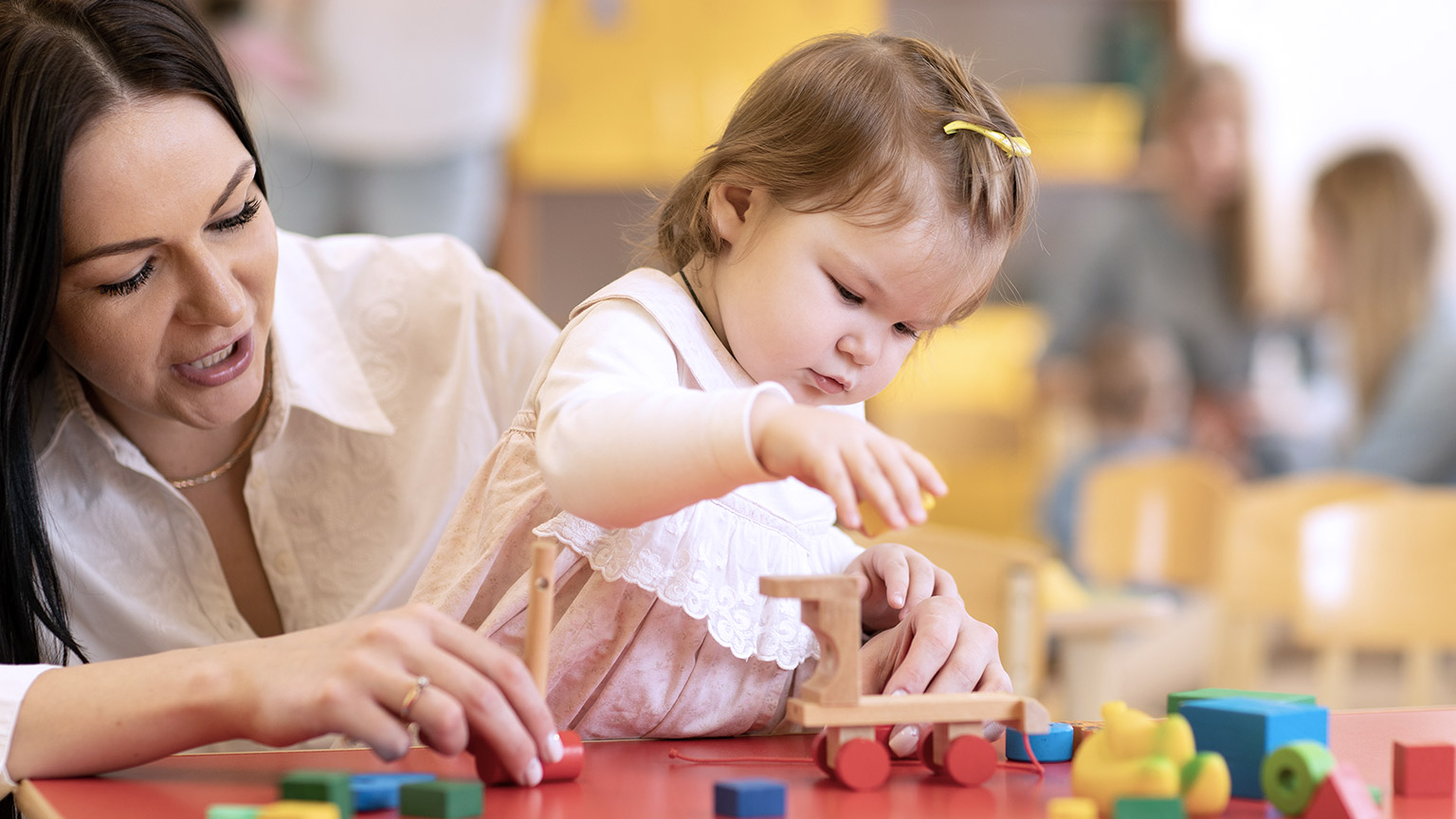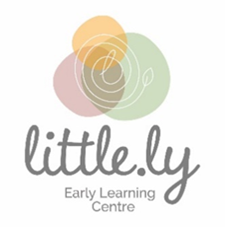Having all the information about a child is important to support their holistic development. Thus it is relevant to include those who know the child best continuously. We use this information as a springboard to build practices that connect with the individual or group's learning needs, and at all times, educators should reflect on and assess their skills, knowledge and practices. Educators often need to give children strategies to manage moments during these social interactions and provide guidance and language they might use.
By the end of this topic, you will understand:
- the social world
- childhood pedagogies
- collaboration
- guidelines for supporting the holistic development
- critical reflection.
As we reflect on all of the areas discussed so far, it is important to understand the interconnectedness and the impact on the child’s social skills and integration into their social world.
Without a feeling of safety, comfort and belonging, consider how a child would be able to enter social situations; imagine what this may look and feel like for a child. Imagine the challenges if a child cannot manage their emotions and produce methods for communication in building and maintaining quality relationships, especially with peers.
Over time, children will learn to play together in cooperative play. This is a necessary practice for children to learn skills such as:
- Negotiation
- Discussion
- Shared decision making
- Independence, responsibility and teamwork
- Collaboration
- Social and physical risk
- Managing conflicts
- Understanding consequences
How can we support childhood practice and support learning these skills? Educators often need to give children strategies to manage moments during these social interactions and provide guidance and language they might use. Setting out strategies early can help children when moments arise that seem out of their control and liking. Educators may like to teach phrases and implement age and stage-appropriate strategies.
Educators can support children by providing clear, concise and age-appropriate guidelines for behaviour, especially behaviours centred on others and managing social problems. These can be through methods such as verbal discussions, reminding children of limits and boundaries and visual cues for social support displayed in the room.
Encouraging respectful behaviours is contagious. If children learn to praise each other for their kindness, gentleness and patience (strength-based approaches), they also learn to recognise when children are not practising these behaviours. Children often remind each other about expectations and promote prosocial behaviours better than any adult could.
The social stage of arousal
When the arousal systems are stressed, the child will find it challenging to manage and have the energy to engage in social systems. This is not due to a lack of motivation. Children must be soothed and see the world as safe and supportive before engaging in social engagement. ‘When a child feels threatened, the result can be sympathetic flooding (anger and aggression, flight or desertion) or parasympathetic flooding (withdrawal, paralysis). Such dysregulation can have a profound effect on her tension, emotions, and self-awareness (Shanker et al., 2015, pg. 24).
When the fight, flight and freeze systems are in place, it shuts down the systems that enable children to experience ‘cognitive empathy’, which means how they are affected by and aware of what and how someone else feels.
A collaborated solution
By around 3-4 years old, children can manage situations with guidelines by themselves. They do not always need an adult’s intervention to manage conflict, disagreements or problems. This also builds a sense of agency and ownership within the group.
Example
Read the Problem Solving Guide to consider problem-solving steps to assist children.
Consider supporting such experiences as:
- Providing play that encourages small and large group play opportunities such as construction, investigation, home corner, large or small group art or collages
- Providing opportunities for children to contribute their ideas and make decisions about areas that impact them, for example, thoughts about their world and how to look after it, rules of the room, strategies for managing ‘problems’ and planning ideas
- Team-building activities, songs, dances and games include Ring a Rosie, a magic blanket memory game, who stole the cookie from the cookie jar and hopscotch. These allow children to practice turn-taking, patience, teamwork, peer encouragement, problems solving and cooperation
- Providing a selection of material for children to choose from and encouraging children to be interested in the creations and actions of others, asking questions and having ideas
- Encouraging children to take on responsibility and ownership and assisting in areas such as preparing for mealtimes, watering the gardens and setting up experiences for the group with a partner by taking turns so that all children can assist. Also, encouraging children to negotiate roles and be thankful to those who have helped them or the class.
Case Study
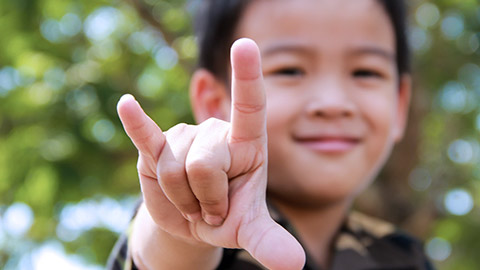
In the kinder room at Little.ly, they have realised that the service has not sorted their rubbish and re-used materials. The team decided to sit down together and devise a plan to support the service to be better ‘earth warriors.’ They nominate a leader (who they decide has to wear war paint and ‘camos’), a scribe to write out their plan and teams for different tasks. The task groups they decide on together are:
The bin bandits
The art keepers
The research bunnies
Consider the benefits of giving children ownership and responsibility such as this.
Practice
Social Learning Activities
Design one experience for a 5-year-old to learn about negotiation and nominate pedagogical practices you may implement in line with the experience.
Ensure that you keep notes for future reference, as this information will support your assessment and professional practice.
Consequences and conflict
Children will learn about ‘natural’ or ‘logical consequences’ throughout their lives. Logical consequences include ‘no hat, no outdoor play,’ or if we cannot treat the toys with respect, they may need to be put away.
Natural consequences may include children not wanting to play with other children if they shout at them or hurt them. Another example would be staying up late will bring the consequence of being tired the next day. These happen in response to a child without adult involvement, imposed by nature, society or another person. As the title suggests, a consequence occurs ‘naturally.’
Boundaries and limits are important and necessary, and these need to be:
- Age appropriate (the children need to be developmentally capable of meeting the expectation)
- Consistently implemented and reminded
- Supported by strategies for when children, e.g., do not compliantly apply these, redirection and reminders&
- In line with the service behaviour guidance policy
- Critically reflect upon where they are continuously not applied by children or staff
- Applied in line with discussions about ethical or moral rights of others and self in line with age/stage
- A child-centred approach
- Demonstrate and share strength-based approaches. Demonstrate belief in children’s capacity to succeed
- Demonstrating sensitivity and empathy
- Demonstrating an understanding of the complex differences in contemporary family systems, diversities and the evolution of families today and how this impacts the behaviour of children
- Built upon a relationship based on trust, rapport and respect for the children and a mutually respectful environment
- Encouraging open communication and shared decision making
- Based on active listening without judgement or bias
- Demonstrating responsiveness&
Strategies for grounding, meditation and mindfulness
Meditation aims to re-ground, re-centre, refocus, be calm and ‘be’ in the moment.
It is a simple technique but challenging for many in this bustling and overstimulating world. It includes many styles we are already aware of, such as yoga, reflection, gratitude exercises, guided or unguided meditation with music or without, object focus, etc. This is helpful for educators and children alike (as well as families).
Most of these are also great for children to practice daily and/or for individual children who need more practice refocusing, grounding and reregulating their emotions.&
Yoga encompasses elements of physical, mental and spiritual practices to gain ultimate health and well-being by building strength, awareness and harmony of the mind and body. It also supports the concept of ‘being:’ being in the moment, being still, refocusing and grounding.
Grounding exercises are flexible to the child's needs, interests and skills. The main goal is for them to practice being in the moment and focus on something, in particular, to become calm and refocused/p>
Watch
Watch the videos about grounding, meditation and mindfulness:
Headspace, Meditation, How it Works (1:16 minutes)
Guided Meditation for Children, Your Secret Treehouse, Relaxation for Kids (16:14 minutes)
Cosmic Kids Yoga Themed yoga sessions (10:34 minutes)
Yoga for Kids (So Fun!) (4:17 minutes)
Yoga for Beginners, 20 Minute Kids Yoga Class with Yoga Ed, Ages 9-10 (24:51 minutes)
Exploring, experimenting and taking risks are essential to a child’s learning and development. Educators must provide the right environment and opportunities for children to challenge themselves and learn safely. Planning activities that promote risk-taking behaviour in a safe setting allows children to become active decision-makers.
Playtime is an ideal opportunity for children to practice problem-solving, develop motor skills, engage in imaginative play, build relationships with peers, express creativity, and explore their environment. Providing a planned learning environment with an appropriate level of risk encourages positive decision-making and resilience should risks not pan out as expected. It also teaches children valuable skills such as goal setting, perseverance and patience, which prepare them for life beyond childhood.
Risky (or deep) play may include conquering fears, playing with animals, climbing heights, going at fast speeds, using ‘dangerous’ tools, or challenging obstacles or trees. Connections to risky play have been made to self-confidence, self-regulation, independence, resilience, resourcefulness, motor skills and the ability to self-manage general challenges and problems in life.
With a loss of natural environments and space for play and safety concerns, however, over time, this play has diminished.
Watch
Watch the clip Westgarth Bush Kinder (3:58):
Learn more
Read the article Royal Park’s Nature Play named nation’s best playground by landscape architects, to learn more about Melbourne’s playground designed to encourage risk-taking.
Curriculums must be designed to incorporate interactions, experiences, activities, routines and events, planned and unplanned, in an environment that fosters children’s learning and development.
- Intentional teaching supports holistic learning as the educator focuses on supporting all aspects of the child’s learning. Educators are deliberate, purposeful and thoughtful in their decisions and actions. Examples of intentional teaching practice include incorporating scaffolding learning and demonstrations.
- Spontaneous play must be included in the curriculum to allow children to choose their own activities, increasing their engagement and enabling them to play for extended periods. Set up learning environments that encourage free flow, unhurried time, and opportunities for children to design their own learning.
- Planned experiences support holistic learning by introducing things a child has not yet experienced or would not typically play with. For example, small world experiences using language, fine motor skills or sandpit play with pouring measures.
- Asking open and closed questions develops children's cognitive abilities and communication skills by encouraging them to think for themselves and be creative through offered options. For example, would you like blue or black, or what colour would you like to use?
In summary, there must be a range of intentional, spontaneous and planned experiences. Educators need to organise activities, routines and the environment to allow children to make choices about activities. Educators do not need to make decisions for children all the time.
Learn more
Learn more about involving children in decision-making by reading the Quality area 1 information sheet.
Assess children’s learning
Assessing children's learning is a complex process involving analysing their cognitive development and social, emotional and physical growth. Educators should strive to create opportunities for children to learn through planned activities, such as group projects or field trips, and unplanned moments, like free play or conversations. Review the success of these activities to incorporate changes to the curriculum.
While developing the curriculum, educators should consider how various types of experiences can foster different forms of learning for every child to maximise their potential for educational success.
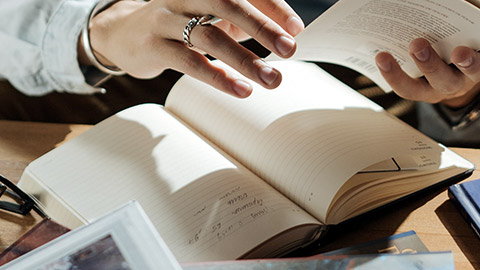
Pedagogy is the theoretical concept of the methods, practices and approaches to teaching and learning others. Educators reflect on pedagogy that will suit the context and the children concerning observation, analysis and programming. They use and incorporate pedagogical practices that ‘reflect knowledge of diverse perspectives and contribute to children’s wellbeing and successful learning’ (The EYLF, BBB, 2011, pg. 12).
Educators use theory to guide their understanding and approaches to the ‘how’ and ‘why’ of learning and development.
It may include areas such as:
- Describing and understanding changes in learning and development
- Socio-cultural theories for understanding what impacts children within their world
- Theories focusing on how experiences in childhood shape children’s behaviours and affect their physiology
- Curriculum theories that challenge thinking
- Theories relating to attachment and relationship-based theory
- Theories relating to power, equity and social justice
Educators refer to many pedagogical practices every day to build and inform learning. These might include:
- Strength-based approaches
- Child-initiated experience opportunities
- Directive, non-directive learning and intentional teaching
- Engaging children as active participants and decision-makers in their own play
- Flexible and smooth in-and-out of play transition sequences
- Allowing unhurried opportunities for play, practice and mastery
- Providing a mix of symbolic and constructed play materials
- Providing open-ended play, self-guided play and directed-play experiences
- Providing developmentally appropriate materials and resources for play
- Natural materials in play
- Allowing freedom and choice in play
- Providing various environments for different types of play
- Arranging spaces for large groups, small groups, paired play, quiet, rest and solitary spaces where children can play alone if they choose
- Promoting and encouraging play and demonstrating genuine interest in their play and discoveries
- Collaborating with children, families and other educators for feedback on the program and their experiences
- Demonstrating empathetic responses to play narratives. For example, ‘oh dear, Sally is crying. I can see baby Sally is upset that she has a sore tummy, and it must hurt.’
- Encouraging children to respect and share in the interests and play of others
- Allowing for individual play preferences and styles
- Providing a social and interactive environment for children
- Providing a safe environment for children
- Extending and supporting the developing play and play interests
Learn more
Read
Plan and document experiences
Planning and documenting experiences usually happen in the context of a program.
The educator sets out what the children will do, identifies the required resources, and links each experience to a quality or developmental area.
In theory, each experience should incorporate routines, play, and transitions.
Incorporate routines
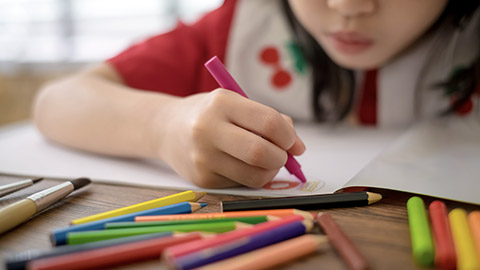
Children feel more secure when they can predict what is going to happen.
Predictable routines help children:
- Practice new skills
- Develop their confidence
- Develop a sense of trust with their educators
Plan experiences that incorporate routines by specifying the steps required to participate.
For example:
- Line up before going outside
- Wash your hands before cooking or eating
- Put your bag away before play
- Finish your snack before coming inside
- Put on your smock before you paint
- Choose the helper from the jobs chart
- Put sunscreen on before going outside.
Play
The best play experiences are designed to help children develop across all developmental areas.
Review the table to see how opportunities to gain experience and develop can be incorporated into play.
| Skills | Activities |
| Cognitive | Putting objects in a bucket of water to see what floats Using blocks to build different shapes Combing paint colours to make different shades Solving a puzzle |
| Communication | Singing songs Acting out the story from popular books Music and movement |
| Emotional | Read a book about feelings Take photos of peoples’ faces and discuss the meanings Play circle games (teaching children to come back when they need help) |
| Physical skills | Manipulating clay or play-doh Climbing and jumping Playing with hula hoops Riding tricycles Catching balls Walking on balance beams Threading shoelaces |
| Social skills | Encouraging group play Any activity that requires more than one person |
Transitions
Transitions are strategies to pause or delay experiences for reasons like eating, nappy changes or other activities.
Incorporate transitions by telling children what they are going to do, providing warning in advance that the experience is going to end, or giving the child a toy to hold. In contrast, the educator goes to lunch, for example.
Other transition activities are:
- Setting the table ready for lunch
- Sitting on the mat
- Going to the toilet or bathroom
- Completing one activity and moving to the next.
Document what you will do by dividing the experience into three parts, including:
- A list of routines required to start the experience.
- A description of the experience with links to developmental outcomes or quality areas.
- A list of transition strategies.
Remember, the home environment is often the most influential context at play in early childhood. This includes everything from the amount of emotional support given by adults in the home to the presence of educational materials such as books or toys. These elements can help foster healthy cognitive and social-emotional development in children from a young age. Additionally, access to quality healthcare services plays an important role in a child’s health outcomes over time.
Educators must take these factors into account when planning appropriate experiences.
The EYLF states, ' When early childhood educators take a holistic approach, they pay attention to children’s physical, personal, social, emotional and spiritual wellbeing as well as cognitive aspects of learning.’ For children to develop in these areas, they need to be safe and healthy and have a safe and age-appropriate environment for play and learning. Children need to have positive bonds and relationships with educators and have a program developed individually for them and the group to support them in reaching their potential. Guidelines that support the compliance of these areas in early learning environments include:
- The Education and Care Services National Law
- The Education and Care Services Regulations
- The National Quality Standards
- The approved learning frameworks
Watch
Watch the YouTube The National Quality Framework to learn about the changes to the NQF (6:26 minutes)
When working in line with the NQF and the NQS, the standards of focus for this module include the following:
- Quality Area 1: Educational program and practice
- Quality Area 2: Health and safety
- Quality Area 3: The physical environment
- Quality Area 4: Relationships with children
Learn more
Review the Guide to the National Quality Framework to learn more about the national quality standards.
The guide is updated regularly, and it is recommended that you only view the online version.
Practice
National Quality Standards
Review the National Quality Standards - Quality Areas 1 and 5 and examine and explain the elements.
Practice
Requirements in Practice
Review Quality Areas 2 and 3 and the Guide to the National Quality Framework, and read the scenario below.
Scenario
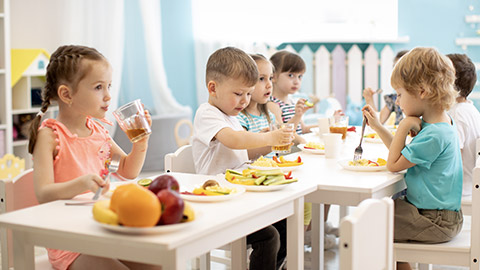
Harry is 2.5 years old; he comes straight inside from play and sits down to lunch on the children-sized natural wooden furniture. Today, lunch is nuggets and chips. The new educator sits and talks with the children about their day and encourages them to ask questions to each other whilst eating.
Write down any areas related (either negative or positive) to these areas, including regulations.
Ensure that you keep notes for future reference, as this information will support your assessment and professional practice.
Policies and Procedures
Educators need to be aware of the policies and procedures in early childhood education and care that are informed by the national quality standards and the EYLF. Services will have in place a range of policies and procedures covering the following areas:
- Health and safety
- Educational program and practice
- Physical environment
- Relationships with children
- Relationships with families and carers.
The Relationships with Children policy could include the following:
- The service upholds respectful and equitable relationships with each child.
- Responsive relationships are built with each child.
- Educators are attuned to children and spend time building relationships with them.
- Educator’s interactions with children are meaningful.
- The service maintains the uniqueness of each child and their abilities and needs.
The Education Program and Practices policy could include the following:
- Activities, experiences, and curriculums are based on professional judgements for program design and delivery methods.
- Curriculum decisions are based on children’s knowledge, development, skills, strengths, ideas, culture, interests, and abilities.
- The child’s voice and their capacity to be decision-makers are acknowledged.
- Educators promote each child’s agency to make choices and decisions that influence their world.
- The service uses the Planning Cycle to make curriculum decisions.
- Critical reflection occurs to review that the curriculum is organised and designed to maximise outcomes for the child.
Collaborative Relationships with Families policy points could include:
- The service sees families and their primary partners in the care of children.
- The service respects the rights and responsibilities of families.
- Communication opportunities for families to share and be involved in decision-making are promoted.
- The service provides families with information on standards and policies, programs, child participation and community resources.
Learn more
Read and review the Policies and Procedures at the Little.ly Early Learning Centre:
|
|
Little.ly Early Learning Centre, a simulated childcare centre. Access information and policy and procedure documents associated with Little.ly. This can be done by logging in to the Educator Hub on Little.ly's website with the following credentials:
|
You have learnt about different learning theories and the need to improve your practice. This can be formally represented in the five stages of the curriculum planning cycle:
| Stage of the planning cycle | Educator activities during the planning cycle. |
| Observing/collecting information |
|
| Analysing learning |
|
| Planning |
|
| Implementing |
|
| Reflecting/evaluating |
|
Program, group and individual reflection
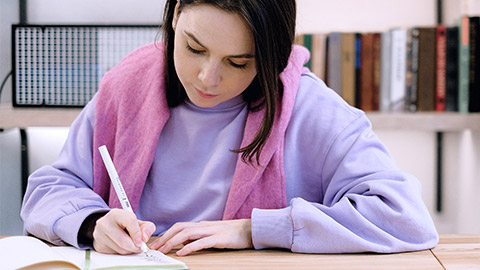
Now is the time to analyse what worked and what did not. Think about what you changed and altered and why. Consider what the children said and any new ideas they had. Did the children work towards the outcome of their journey? What did they do, achieve and say? What happened?
When evaluating progress or reflecting on the experience, it is essential to remember that children demonstrate their learning and progress in many ways. The methods of gathering, documenting and analysing evidence to assess learning must also be varied.
ACECQA informs us, ‘Learning evidence needs to be collected over time and in a range of situations, rather than making judgements based upon limited information or a ‘tick-the-box’ approach.3
Website
Visit the education hub to review wonderful resources relating to ECE and schools
Reflection
Questions you might ask yourself when reflecting upon observation, feedback or progress could include:
- What do you want to evaluate?
- Why do you want to evaluate it?
- How will you assess progress?
- How did I use the environment and routine time to support learning?
- Is the information informative, meaningful and purposeful?&
- What could I have done differently as an educator?
Critical reflection includes observing children to assess their needs, which is essentially becoming an investigator or researcher. This should be discussed and consulted with various stakeholders, including colleagues, children and families, to seek their feedback. Reflecting on these practices is ongoing, as educators often use trial and error to discover what ‘works’ for the children and the group as a whole.
The EYLF4 refers to the key overarching questions to guide reflection:
- What are my understandings of each child?
- What theories, philosophies and understandings shape and assist my work?
- Who is advantaged when I work in this way? Who is disadvantaged?
- What questions do I have about my work? What am I challenged by? What am I curious about? What am I confronted by?
- What aspects of my work are not helped by the theories and guidance that I usually draw on to make sense of what I do?
- Can other theories or knowledge help me better understand what I have observed or experienced? What are they? How might those theories and that knowledge affect my practice?
Educators must ask themselves where their knowledge, skills, confidence or comfort gaps are. No one is an expert in all areas. It is important when critically reflecting to do so with honesty and to ask yourself in which areas you need to improve or require support. How can I develop and grow in these areas?
Collaborating with children may include:
- Spontaneous questions during play or throughout the day about what they enjoyed, what they did not, how we could change the environment, resources and practices
- Group time discussions with a whiteboard or paper to document their findings and feelings
- Child-friendly surveys: you may choose to set up an experience with images of the different play areas or resources and ask children to circle or colour in what they enjoyed the most or draw/paint a picture of what they enjoyed this week. You could take photos, laminate them and place them on a felt board with Velcro asking them to place them on one side if they enjoyed them., Children enjoy giving their feedback and ideas, but it should be encouraged flexibly and as a choice for children to complete just as any other play experience
- These could all be used as gathering narratives of what the child says or the ‘voice of the child.’
Collaborating with colleagues may include:
Consulting about practices and outcomes, asking them for advice and using them as a sounding board is a great way to have ‘professional conversations.’ These can amount to some wonderful professional development opportunities for educators. These may occur through:
- Team meetings/staff meetings
- Scheduled collaboration and feedback sessions with the educational leader or director
- Self-reflection and evaluation documents and discussion around how you contribute to the service, practices and program.
Collaborating with families may include:
- Feedback or survey forms on different areas of practice and planning
- Informal or formal meetings with families to gauge how they feel the service is providing for their child's developmental needs
- Check-in emails with families once a quarter to assess their feelings on various areas of the service program and practice
Amalgamating information to inform future practices
Reviewing and reflecting on observations and feedback and analysing progress is essential. Think about what worked and did not and what can be used to engage further or support children’s learning. Using the gathered feedback from all stakeholders, including observations and analysing, to inform future practice is vital to ensure that educators are always looking forward and not continuing to be informed on practices that are not successful. Educators must critically reflect on these to be sure that they are using meaningful, purposeful and successful pedagogies and practices for children.
Watch
Watch the Ted Talk on Children as Ideas Makers by Debi Keyte-Hartland, TEDxBrum (12:45)
Watch the clip on Teacher collaboration: professional learning in Modern Learning Environments – Stonefields School to review an example of teacher collaboration.
